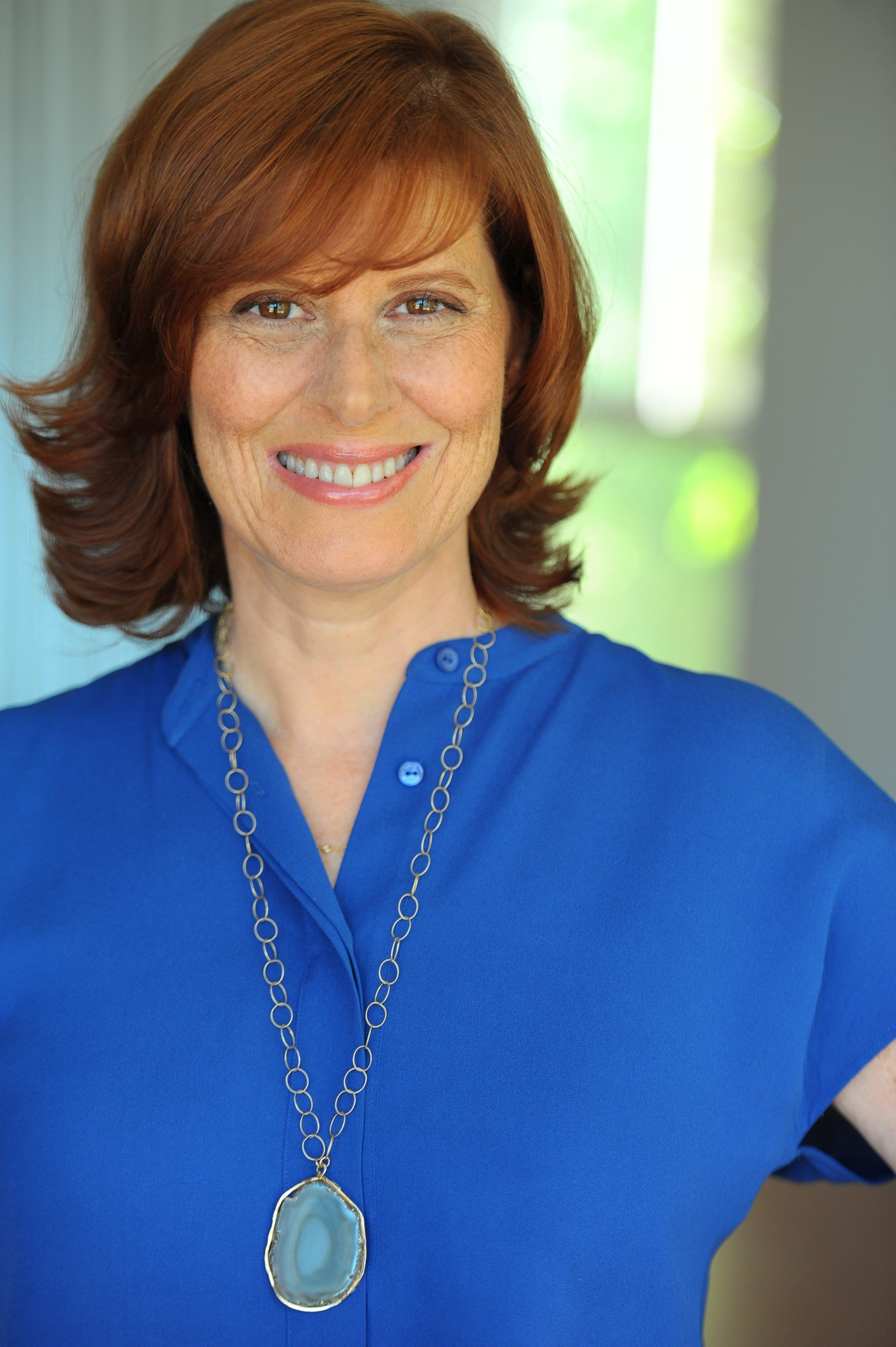Archive for the ‘psychology’ Category

As reported on November 20, 2018, in an article in the New York Post, “when it comes to fidelity in relationships, a new surprising survey found that 49 percent of men did not think kissing someone else was cheating.” AJGpr client, Dr. Fran Walfish, Psy.D., a leading Beverly Hills-based child, couple, and family Psychotherapist recently weighed in on this newly released survey by the BBC and said that these men are in “denial.” Walfish went on to say, “The guy feels a tinge of guilt for what he knows is wrong behavior, and he can’t tolerate or bear that feeling of guilt, so he rationalizes it by telling himself it’s not cheating.”
For the full article click here.

AJGpr client, Dr. Rita Eichenstein, a licensed psychologist with post-doctoral training in pediatric neuropsychology and special education recently launched a blog called Positively Atypical, directed to parents of children with learning disabilities, attention deficit disorders, autism spectrum, gifted populations, as well as quirky kids who don’t fit any diagnosis but still face challenges.
On October 16th, Dr. Rita was guest on Straight Talk with Nick Lawrence to discuss her upcoming book Positively Atypical: How Your Well-Being Affects Your Special-Needs Child—And What You Can Do About It.
Dr. Rita’s life’s work has been to reach out, support, and counsel atypical children and their parents. Positively Atypical is the distillation of 25 years in private practice at Cedars-Sinai Medical Towers in Los Angeles, California, specializing in pediatric neuropsychological assessments and parent training skills.

Money can’t buy you love, but a new study suggests lovemaking can earn you money – and not just if you’re employed in the red light district.
MarketWatch reporter Quentin Fottrell and AJGpr client, couples psychotherapist Dr. Fran Walfish join anchor WSJ News Editor, Wendy Bounds on the Wall Street Journal Digital Network live lifestyle show “Lunch Break” to discuss his story about new research on the relationship between sex and money.
Dr. Fran Walfish is the author of The Self-Aware Parent (Palgrave Macmillan).

After the Newton, CT. shootings, the Oxford University Press turned to AJGpr client, Dr. Karen Schiltz to write about the assessment of children who have the potential to do harm to themselves and others. Here is her response.
“My child could be the next mass murderer. Alex has bipolar disorder. Last year, he pulled a phone off of the wall in the classroom and threw it at the teacher. They evacuated the whole class and my son was suspended for one day. He was suspended five times in nursery school for hitting children. Alex screams at home, swears, throws his toys against the wall, has hit his sister more times that I can tell, and can’t pay attention for the life of him now. He does not like the word ‘no.’ Alex is eight and in second grade. I’m afraid and something has to be done. I’m glad we are dealing with this now. I have to face this.”
I saw the parents of Alex Monday morning.
Like many of you, I was in shock and horrified about the slaughtering of 20 little children and 6 adults. I wondered: why did Adam Lanza not receive help for his condition or, if he did, was he misdiagnosed? Did his parents not follow through with providers? Did providers fail to address his problems? Were the parents in denial? Were teachers in denial?
“I’m scared. I see things at night like shadows and I hear soldiers that are coming to get me at night. I ran into daddy and mommy’s room. I saw something black when I was running to my mommy’s room. Someone is whispering to me too. I hear whispers and voices. I don’t understand what they are saying.”
Alex was eager to tell me about the voices and sounds he heard. He also told me that his parents were oftentimes angry at home and he was always scared of what could happen next.
His parents told me about several warning signs that increased in severity, intensity, and frequency as Alex aged. They were:
- Fears of attending school
- Hearing sounds such as whispers and soldiers conversing with each other
- Nightmares
- Poor frustration tolerance
- Problems managing his anger
- Real shifts in mood ranging from deep sadness to silliness
- Trouble concentrating
- Trouble sleeping
- Withdrawal from family and friends
- Wringing of hands and complaints of stomachaches
Do these parents need counseling? Does Alex need help as well? Will the parents accept my feedback after I assessed their child, interviewed Alex’s teachers and them, and conducted the testing?
Monday had a happy ending. These parents were not in denial nor did they deny Alex had a problem. They realized early intervention was crucial to helping their child. Alex’s parents were aware that their son’s marked troubles with managing his anger, low frustration tolerance, problems with focusing, and his ability to “go from 0 to 100” in a split second of rage were not normal. They deeply wanted a typical eight-year-old boy before it was too late.
It is not too late for lots of children. All of us, including teachers, physicians, and other care-taking and healthcare professionals need to listen to and observe children when something is not quite right. Taking the time to talk with children and educate parents about the warning signs of mental illness is critical.
Assessment and early intervention are the keys to unlocking the cause of a child’s pain and other problems such as a reading disorder. We can help children if we intervene at an early age and recognize the signs of mental illness such as mood instability, sadness, irritability, and anxiety. Many children need help and aren’t getting it. Recognizing a child’s struggles as early as possible is key to optimizing their success in life and overall mental health. The tragedy can be when it is not addressed in time to help either the victim or aggressor.
The bottom line is: we need to review the big picture of what is happening with our children and help parents advocate for their child when something is a little off. It was not too late for Alex and it shouldn’t be for your child either.
Karen Schiltz is the co-author of Beyond The Label: A Guide to Unlocking a Child’s Educational Potential and Associate Clinical Professor (volunteer) at the Semel Institute for Neuroscience and Behavior at the University of California, Los Angeles. She has over 26 years of experience assessing children and young adults with developmental, medical, and emotional disorders including the autistic spectrum and maintains a private practice specializing in neuropsychology in Calabasas, California. Dr. Schiltz blogs for Psychology Today at Beyond the Label.
Redefining Autism: New Diagnosis Guidelines Shouldn’t Worry Parents – Dr. Karen L. Schiltz Weighs In
2012

In her recent blog, Health e, Christina Elston, editor of Los Angeles Parent magazine posted this piece Redefining Autism: New Diagnosis Guidelines Shouldn’t Worry Parents. Since Christina turned to AJGpr client, Karen L. Schiltz, Ph.D., I thought I would share it with AJGpr blog readers. Dr. Schiltz is a psychologist specializing in the clinical and forensic neuropsychological assessment of children, adolescents, and young adults.
Here it is:
For the one in every 100 or so children in this country with autism, a diagnosis is a critical link to treatment and services. It means that school districts will provide extra resources, and insurance carriers will pay for medical and psychiatric treatment.
The word itself has been in use for more than 100 years, but as the psychiatric community prepares to update the definition of “autism,” many parents have panicked, fearing that if the definition changes, their kids will lose the diagnosis and the services that go with it.
The latest evidence suggests that most families need not worry.
“I’m looking at all the kids I’ve tested and I just don’t see that [happening],” says Karen L. Schiltz, Ph.D., a psychologist in private practice in Calabasas since 1988 and author of Beyond the Label: A Guide to Unlocking a Child’s Educational Potential (Oxford University Press, 2011). “I actually felt really relieved when I saw the new definition come out.”
The definition in question is part of the upcoming fifth edition of theDiagnostic and Statistical Manual of Mental Disorders (DSM-5). Published by the American Psychiatric Association, it sets the standard for how health-care providers classify mental disorders. The book first listed autism as a unique diagnosis in 1980, but its definition hasn’t been revised since 1994. Meanwhile, the number of children diagnosed has skyrocketed, jumping 78 percent in the past decade.
No More Autism Sub-Categories
One reason the update is causing such a stir is that the proposed definition in DSM-5 collapses a whole range of autism spectrum sub-categories into one single diagnosis. This means that diagnoses like Autistic Disorder, Asperger’s syndrome and the umbrella term of “Pervasive Developmental Disorder – Not Otherwise Specified (PDD-NOS)” would go away, leaving only autism spectrum disorder (ASD) as a clinical label. Many parents have expressed concerns that their child’s diagnosis will disappear along with the subcategories.
Going forward, “the job of a clinical psychologist is to answer a question of, ‘Is it ASD or not,’ rather than, ‘Is it Autistic Disorder or Asperger’s disorder or PDD-NOS,’” says Marisela Huerta, Ph.D., a psychologist at Weill Cornell Medical College in New York. But, she says, parents don’t need to worry. A recent study led by Huerta suggests that most kids with a current diagnosis on the spectrum would keep that diagnosis under the new guidelines.
There’s no harm in eliminating the sub-categories, Huerta says, because research over the last decade fails to identify differences in the clinical presentation (or the range of symptoms) associated with Autistic Disorder, Asperger’s disorder and PDD-NOS. “More importantly, we’ve learned that the different DSM-IV categorical diagnoses are not used in a consistent manner by clinicians,” she says. One recent study even showed that the clinic where a child was evaluated was a more important factor than the child’s actual symptoms in the specific autism diagnosis they received, with some clinics seeming to favor one sub-category over another.
Including New Symptoms
And while it offers only one diagnostic label, the proposed overhaul is actually more inclusive in some ways than the current definition. The new definition would:
• Include sensory interests and aversions among the symptoms used to define ASD – These symptoms – being especially picky about food or irritated by the texture of clothing, for instance – aren’t included in the current diagnosing criteria.
• No longer require that a child exhibit evidence of developmental delays before age 3 – Instead, the definition would require that a child show examples of unusual behavior “in early childhood,” making it easier for clinicians to diagnose children whose delays weren’t noted early on.
• Account for the fact that social impairments may change over time – ASD may look different at age 3 than, say, at age 10 or 30.
The new definition is also more specific and makes it easier to tell the difference between autism and other disorders. Speech delays, which occur in kids with autism but also in those with a range of other problems, have been removed from the criteria. Meanwhile symptoms that are unique to autism – including repetitive movements like arm-flapping, rigid adherence to routines or rituals, and unusually intense or odd interests – must now be present for a diagnosis.
“A large body of research over the last decade has demonstrated that nearly all children with some form of autism demonstrate these types of behaviors at some point in their lives,” says Huerta. “The presence of these behaviors, alongside a pattern of social and communication difficulties, is unique to autism spectrum disorders.”
Huerta’s study, the largest to compare existing diagnostic criteria with the proposed changes, included data on 4,453 children with an autism spectrum diagnosis. She and colleagues reviewed detailed parent reports on the children, and applied the newly proposed criteria. It turned out that 91 percent of the children would be diagnosed with ASD under the new guidelines based on parent reports alone, and Huerta believes that clinician input would clinch a diagnosis for many of the remaining 9 percent. Her study appeared in a recent issue of theAmerican Journal of Psychiatry.
Schiltz, who specializes in neuropsychological assessment, believes the new criteria could even eliminate roadblocks to diagnosing some kids – especially those whose delays were “camouflaged” during the early years. “A kid who played in the sandbox for hours and hours in early childhood seems normal,” she offers as an example, noting that if parents don’t notice that something isn’t right by the time their child is 3, it can be tough for them to get help.
The common question from parents has been, “Why wasn’t this diagnosed earlier?” Schiltz says.
Advice for Parents
The specific autism guidelines in DSM-5 are still under review, and won’t become official until 2013. But Schiltz says the new criteria and definition are only the beginning. You still need a thorough evaluation of the child in order to make a correct diagnosis.
“It takes years and years of experience to understand the complexity of autism,” she says. “When we assess children, it’s a process.”
She advises parents who suspect their child might have a problem to take good notes. “I encourage parents to write things down when you see something that’s not quite right,” she says. Take that list to your pediatrician, ask for a referral to a psychologist, and get another opinion if you feel you weren’t heard. Once you have your referral, Schiltz says, a quality evaluation will:
• look at all possible causes for the behaviors your child is displaying;
• look at your child in all of her different environments (i.e. at home, at school, with caregivers and peers);
• provide an accurate roadmap of all of your child’s strengths and weaknesses; and
• include input from parents, teachers and other caregivers.
The proposed new guidelines, Schiltz says, won’t alter the process a good psychologist goes through in making a diagnosis. But because the criteria are more specific, in some ways the process will be easier. “The way we evaluate will not change,” she says. “[But under the new guidelines] we have more items to look at, and less to argue.”
Dr. Fran Walfish, Psychotherapist to Expert Comment on Governor Jerry Brown Signing Senate Bill 1172
2012


My client, Karen L. Schiltz, Ph.D., a clinical psychologist in private practice, specializing in the clinical and forensic neuropsychological assessment of children, adolescents, and young adults was asked to contribute to Atriumpsych.com. Her article One Suit Doesn’t Fit All: The Role of Pediatric, Young Adult Clinical and Forensic Neuropsychological Assessments outlines the different needs of clinical and forensic assessments when dealing with children and young adults.
Dr. Schiltz is the author of Beyond the Label: A Guide to Unlocking a Child’s Educational Potential (Oxford University Press).

My client, child and family psychologist, Dr. Fran Walfish was asked about Valentine’s Day and people’s expectations. Here is what she said to CNN reporter Emanuella Grindberg.
Dr. Walfish is the author of The Self-Aware Parent: Resolving Conflict and Buiilding a Better Bond with Your Child.
Karen L. Schiltz, Ph.D., author of Beyond The Label: A Guide to Unlocking a Child’s Educational Potential, is a psychologist in private practice, specializing in the clinical and forensic neuropsychological assessment of children, adolescents, and young adults.
Read her most blog in Psychology Today where she details how neuropsychological assessment/comprehensive evaluation is critical in order for you to understand the big picture of your child’s needs.






